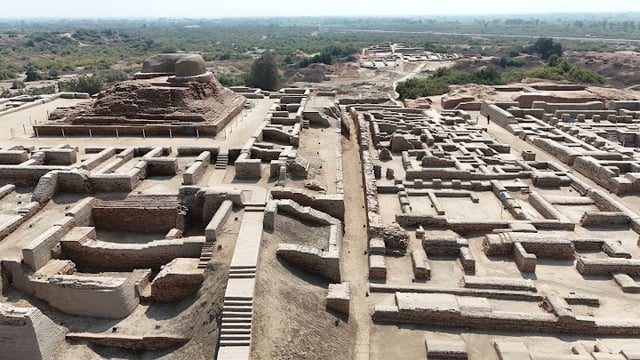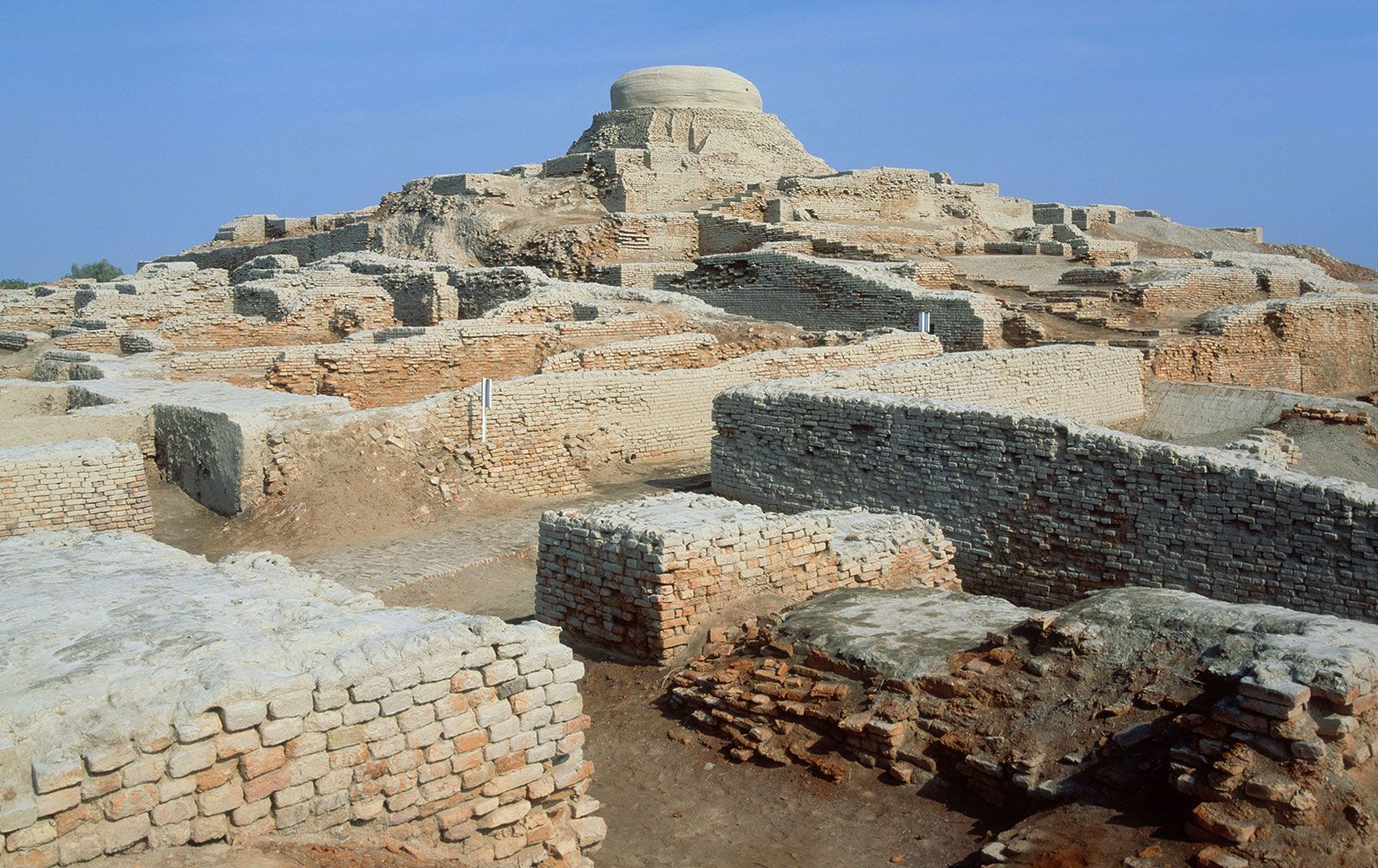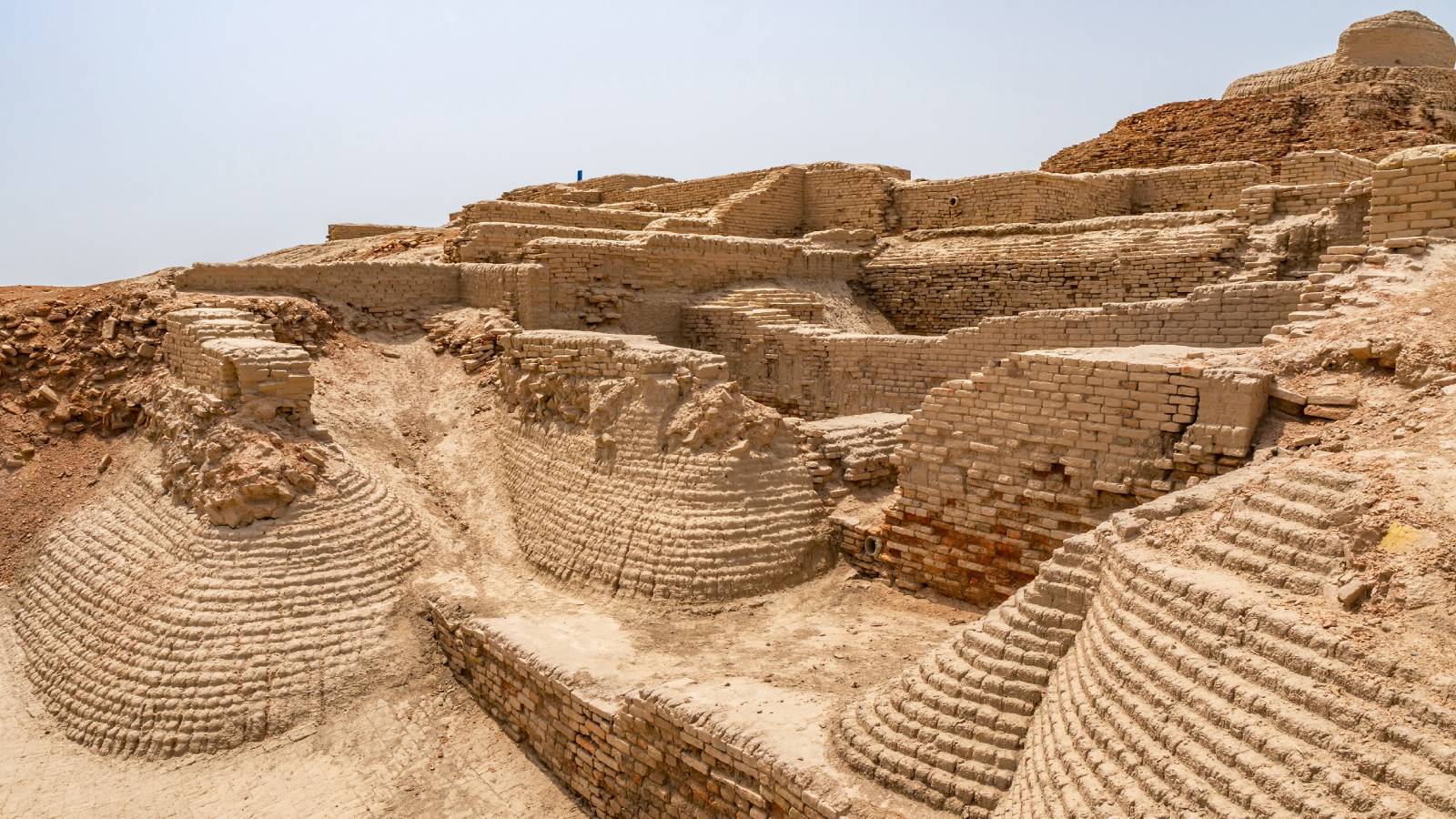Mohenjo-Daro

Introduction
Mohenjo-Daro, which means "Mound of the Dead," is one of the most significant urban settlements of the ancient Indus Valley Civilization. Discovered in 1922, it is located in the Larkana District of Sindh, Pakistan. This site offers a window into one of the world’s earliest major urban centers, built around 2600 BCE.
Advanced Urban Planning
Mohenjo-Daro was built with remarkable precision. Its streets were laid out in a grid pattern, and it featured a sophisticated drainage and sewage system, far ahead of its time. The architecture includes standardized fired-brick buildings, large communal granaries, residential areas, and public bathing structures.
The Citadel and Lower City
- The Citadel: Housed important public buildings, including the Great Bath, believed to be used for ritual purification, a granary, and administrative buildings.
- Lower City: Contained residential buildings, markets, and workshops. Homes had private wells and baths, indicating a high standard of living.
Culture and Daily Life
Artifacts such as pottery, tools, jewelry, and figurines have been uncovered, showcasing a sophisticated culture. The famous bronze statue known as the “Dancing Girl” and intricately carved seals are prime examples of their artistic and technical skill.
Language and Script
The people of Mohenjo-Daro used a script that remains undeciphered. Hundreds of seals with inscriptions have been found, indicating a form of written communication likely related to administration and trade.
Decline and Legacy
Around 1900 BCE, Mohenjo-Daro and other Indus cities began to decline. Reasons for the collapse are still debated—possibilities include climate change, river shifts, or invasion. Today, the site stands as a UNESCO World Heritage Site and a powerful symbol of early urban civilization.
Quick Facts
- Estimated Population: 40,000
- Area: 300 hectares
- Known for: Advanced sanitation system and Great Bath
- Period: Circa 2600–1900 BCE
Image Gallery




Mohenjo-daro
Location: Larkana District, Sindh, Pakistan
Mohenjo-daro is an ancient Indus Valley city built around 2500 BCE. It features advanced urban planning, drainage systems, and is a UNESCO World Heritage Site.
Learn more